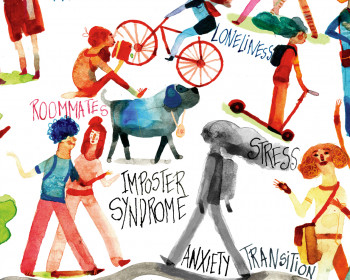What’s a connectome good for anyway?
Much uncertainty swirls about connectomics, the effort to map all the connections among neurons in the nervous system. It’s unclear whether technical issues associated with making the maps can be solved anytime soon or if the completed maps will ever live up to their hyperbole-laden promise of revealing the basis of personality, intelligence, memory, and mental disorders.
What’s unambiguously true is that many of the unknowns about how brain connections develop and change over time are now within reach. One key question: What does a normal network look like?
“First, we need to understand how these circuits are supposed to develop, what they are supposed to look like in a normal brain,” says Weissman-Unni, assistant professor of biology. “Then we can start to explore what happens in various disease models. For example, could a subtle developmental disorder result when, say, a given neuron has six inputs instead of the usual four?”
Her work on zebrafish, whose cerebellums are similar albeit much smaller compared to those in human brains, is a small step toward understanding what’s normal and what’s not at a neuron-to-neuron level. She says this type of information might be useful in ultimately understanding and treating maladies like autism or schizophrenia, both of which may involve some subtle, underlying disorders within neural circuits.
“Since college, I’ve wanted to do work that’s relevant to the world, that might someday help people—even if only on a small scale,” she says. “It’s a huge driving factor.”
More L&C Magazine Stories
Lewis & Clark Magazine is located in McAfee on the Undergraduate Campus.
MSC: 19
email magazine@lclark.edu
voice 503-768-7970
fax 503-768-7969
The L&C Magazine staff welcomes letters and emails from readers about topics covered in the magazine. Correspondence must include your name and location and may be edited.
Lewis & Clark Magazine
Lewis & Clark
615 S. Palatine Hill Road MSC 19
Portland OR 97219

